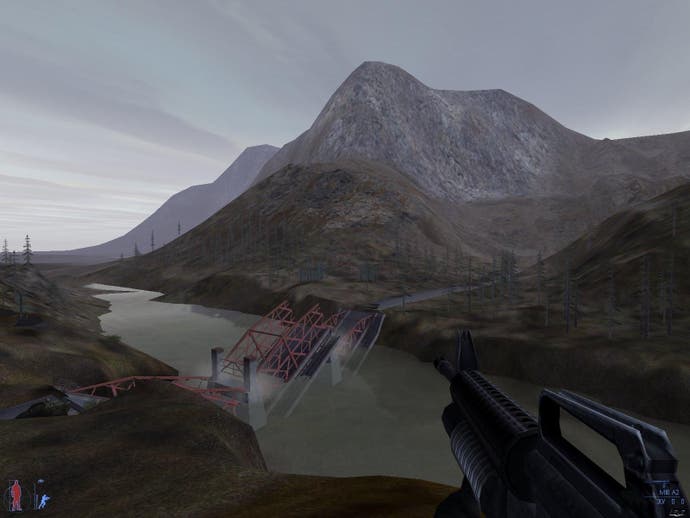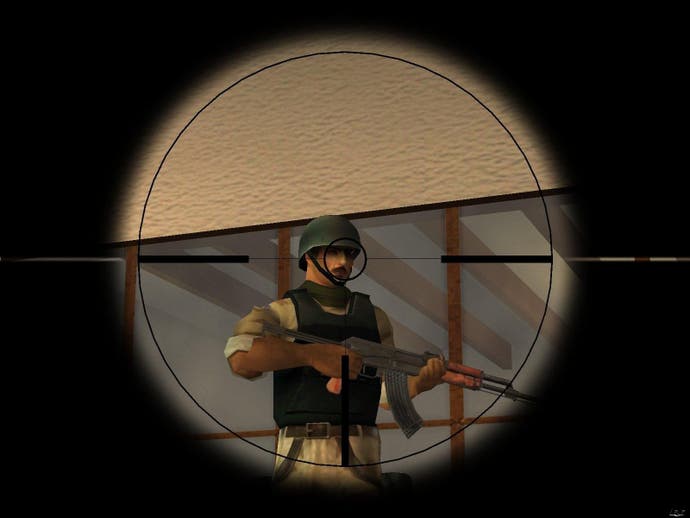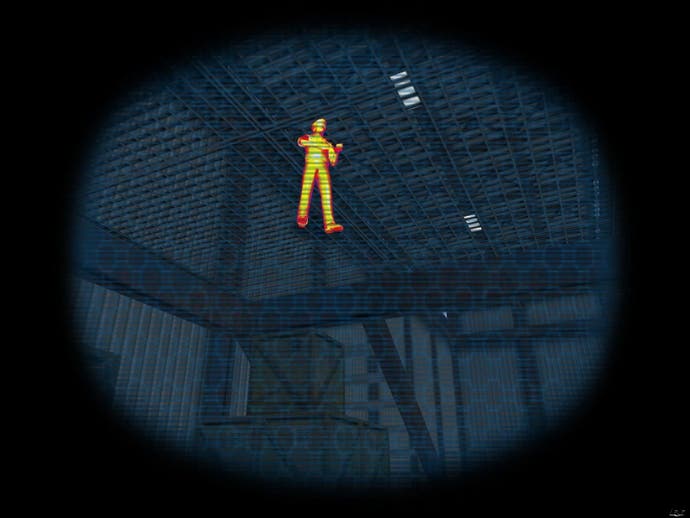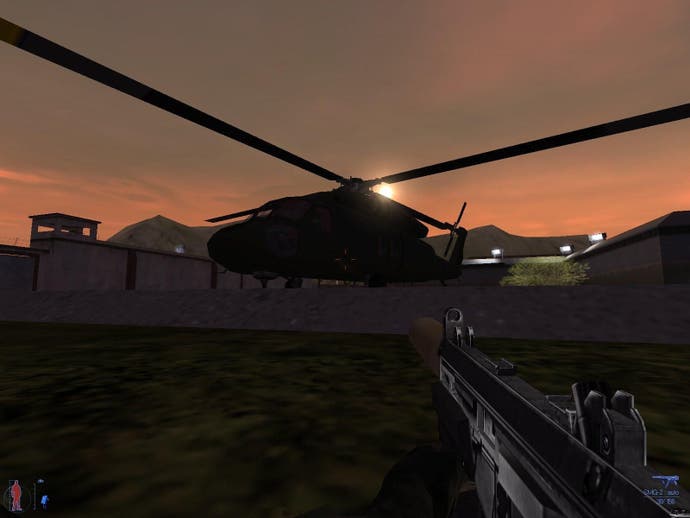IGI2: Covert Strike
Review - Martin gets his stealth on for Innerloop's second Project
It's been two long years since Project IGI first crept up on us and stole our hearts with a charming blend of cunning stealth-based shenanigans, interesting gadgetry, an intriguing plot and a superlative engine to boot. I think we mumbled something along the lines of having a PC GoldenEye on our hands, and we meant it. Have Innerloop taken what we enjoyed so much about the first game and crafted a masterpiece? Is it merely more of the same? Why do I always have to put questions at the end of my introductions?

Progress makes perfect?
More of the same wouldn't have been a good move, in my opinion. What primarily held Project IGI back from being a downright classic was the lack of a multi-player mode and some pretty ugly AI behaviour from time to time. Had Innerloop delivered a mission pack of a game two years down the line, the disappointment would have been great. Thankfully they appear to have taken steps to address the issues many had with the original; the engine has been beefed up; the AI routines have been re-worked; they've introduced a far more forgiving save system; and, of course, there's a proper multi-player feature.
What appealed most about the original IGI was the sheer strength of the single-player game, and so that's where my attention was immediately drawn with the sequel. Innerloop seem more willing this time round to simply throw the player into the thick of things, only bothering themselves with the bare minimum of (cut) scene-setting before expecting you to get to work.
The story starts with IGI agent David Jones parachuting into Russia to retrieve evidence that a new type of stolen EMP weapon is in production. What picks up as an apparently rudimentary mission-by-mission plot soon begins to take a few interesting twists, but never gets deep enough to really touch the gameplay itself, as the narrative rarely interferes with your 'go here; find this' objectives. Consequently the story and the game actually feel quite detached from one another.

Sneakers
The game plays much as you would expect, and stays quite faithful to the original's formula. Two year's of maturity in the stealth-action genre have forced Innerloop to take more careful consideration of how the stealth elements work in IGI2, and we're now graced more twitchy enemies with eyes like hawks. To help gauge how likely you are to be discovered in the field, there's a sort of Splinter Cell-style risk assessment meter next to your health bar, detailing how likely you are to be discovered. Unfortunately due to the constraints of the engine, you can't make use of light and shadow anywhere near as well as Sam Fisher might and so your stealth antics rely more on your ability to hide around corners and hold the crawl key a lot.
Aiding you in your approach are a few extremely nifty gadgets. The light-enhancing binoculars and thermal goggles both help to quickly assess how much danger you might be in, particularly with the latter's ability to see through immediately visible surfaces. Possibly even more nifty than these two is the brilliant GPS real-time map computer, which shows you an overhead view of your location, and enables you to zoom and scroll around spotting highlighted objectives and enemies as they go about their patrol routes. These tools give you an excellent opportunity to simply take stock of your options and plan a decent approach route.
Properly approaching the situation is absolutely essential in IGI2. The emphasis on being careful is extremely strong, and rushing a base with a machine gun blazing is an absolutely terrible idea. It might work for a while, but eventually the alarms will blaze and before you know it you're pinned down in a hut and rapidly running low on ammo. Your life can be made a lot easier by sneaking over the crest of a hill, popping a few security cameras with your sniper rifle and cautiously avoiding guard patrols. Frustratingly, you're forced to play like this for most of the game and it can be a little disheartening having to restrain your AK-47-toting enthusiasm should you want to finish the mission in one piece.

Picturesque
Graphically, the game looks very similar to the original. Improvements on the draw distance and general terrain detail are welcome additions though, and the new water effects are quite lovely. Conversely some models, in particular vehicles and indoor details, lack the care afforded outdoors and you get a strange contrast between lush graphical brilliance and flimsy low poly movie set interiors. There's also the odd visual glitch, such as the shadows of player models projecting through walls and mountains, and according to Jones' shadow he has a head the shape of a breadbin.
The sound design, on the other hand, is rather more consistent, with a decent moody soundtrack and some fantastic spot effects. The guns sound just right, snow and gravel crunch underfoot in just the right way, and bullets even ricochet off metal with just the right amount of, er, ping. The only real slip-ups in the sound department come in the shape of god-awful enemy voice acting.
While I'm at it, another gripe I have is with the game's so-called advanced AI. While particularly good at hunting you down, running for cover and seeking comrades for assistance, enemies are still easy to bait into a room to be popped off one by one, corpses piling high in the doorway. Couple this tactic with the fact that enemies no longer respawn a la Project: IGI and you have a pretty simplistic method for clearing many areas, providing you can find a nice spot where you're covered from all sides.

Challenging
Despite the loopholes and slip-ups here and there though, IGI2 is on a whole quite a stern challenge. With three large campaigns each split across a number of levels, and each taking a goodly length of time to get through, the chances are you could be at it for days on end. This is due in part to the fact that many levels are as hard as nails, and some can be more irritating than fun.
Thankfully there is some relief offered in a completely redesigned save system, which is accessed via your map computer. Depending on your chosen difficulty setting, you have a set number of saves per level, and three slots will typically do you quite well without making the game a quick-save cakewalk while simultaneously avoiding the kind of hairline demolishing frustration that cropped up with the first title far too often.
I haven't forgotten the multi-player mode by the way, but it appears that Codemasters have, because for all our trying we simply couldn't locate any servers to play our review code on. Based on both our and others experience with the recent multiplayer tests though, it seems a worthwhile and well-planned addition. The game takes the form of a CS-style objective-oriented affair across six thoughtfully designed maps. We're assured that Innerloop plan to fully support this portion of the game post-release with instalments of new maps and weapons via patch updates. Free ones to boot. Fancy that, eh?
Conclusion
I was sort of surprised by the direction IGI2 had taken at first. It was clear from the outset that Innerloop had been listening to the criticisms levelled at the first game, and set out to address the problems directly. The effect is that IGI2 has lost some of the naïve charm that made Project IGI so appealing in a bid to contend with real players like Splinter Cell and Raven Shield, and appearing slightly weak and flimsy in its attempts to do so. Once you give it a chance though, it's a fairly competent shooter with quite a bit of life in it - just not quite the leap forward we had hoped for.

